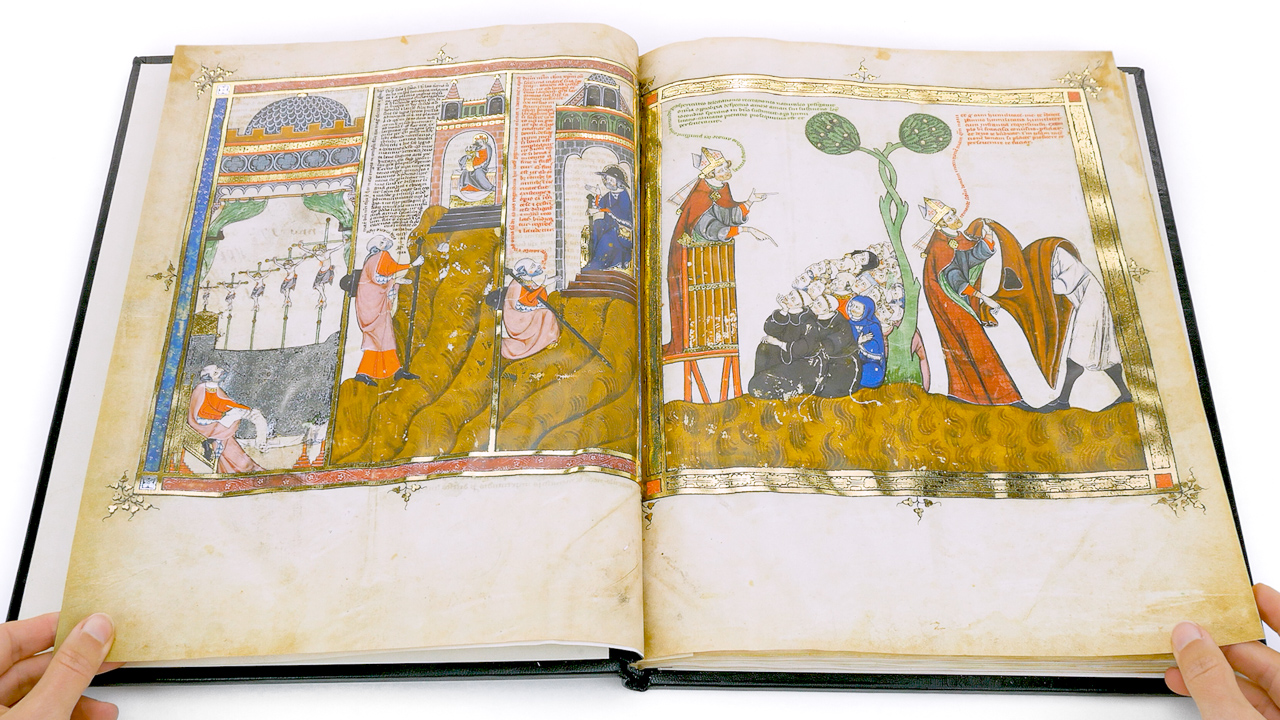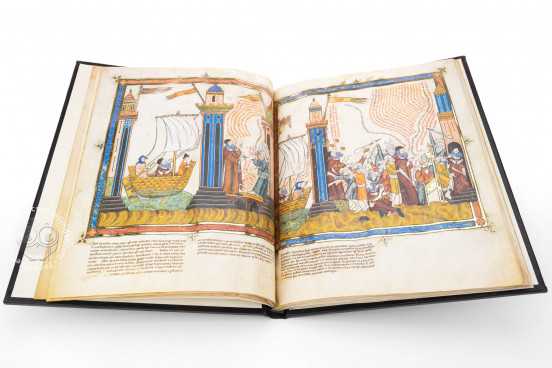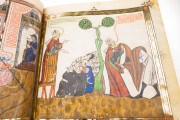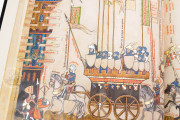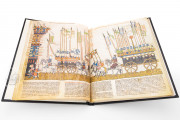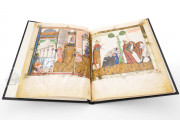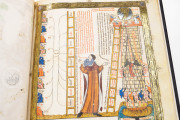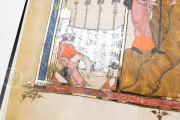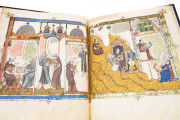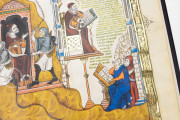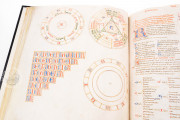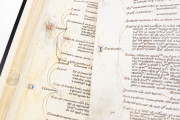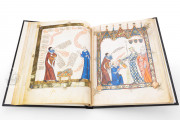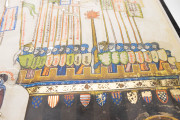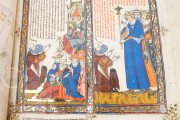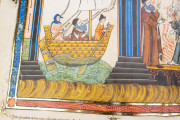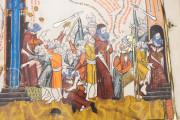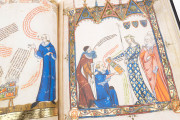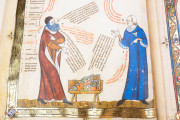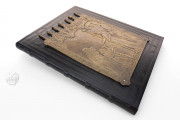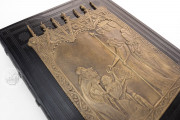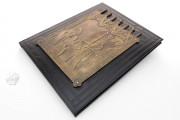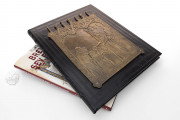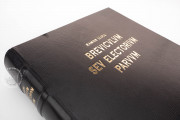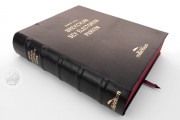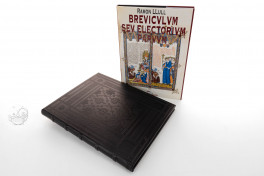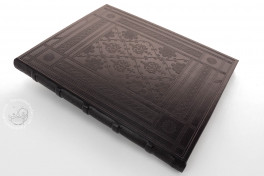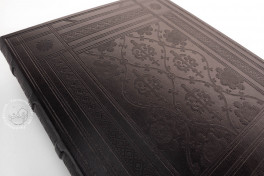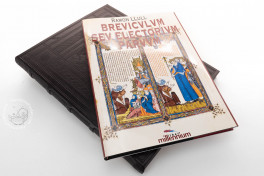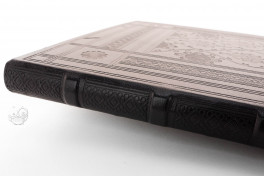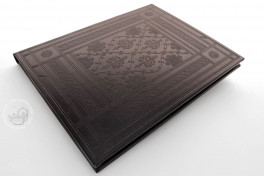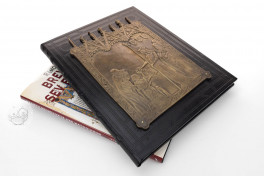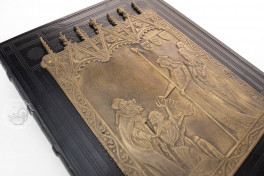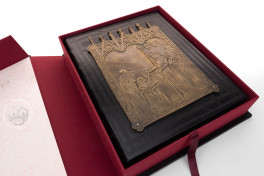The unique manuscript of the Breviculum of Thomas Le Myésier, also known as the Electorium parvum, contains the oldest cycle of illuminations relating the life story of a near contemporary layman. The subject of this pictorial biography is Ramon Llull (d. 1316), who was Le Myésier's teacher. The manuscript was created at Arras before 1322 under Le Myésier's supervision.
The main text is a concise explanation of Llull's philosophical system, designed to prove Christian doctrine to Muslims and Jews by rational argument without relying on scriptural authority. The manuscript's twelve full-page miniatures in gold and bright colors include many Latin inscriptions in colored inks.
The Life Story of a Missionary
The life of Ramon Llull, missionary and philosopher, is brilliantly documented in the sequence of miniatures that precedes the main text of the manuscript. The story begins with Llull's five visions of the crucified Christ and extends to the presentation of Le Myésier's compilations to his patroness.
The miniatures show many of Llull's travels through Europe and North Africa, visiting pilgrimage shrines and engaged in disputes with local Muslims.
A Plethora of Details
Llull's energetic debates are portrayed in the miniatures using lively hand gestures and with physical interaction among the disputants, and the locations are established by distinctive landscape and architectural elements, as well as coats of arms.
The inscriptions identify people, places, and abstract concepts and very often report the direct speech of the protagonists. Llull is always present, and Le Myésier himself appears in most of the scenes.
An Unusual Painting Style
The style of the miniatures is not quite like anything else of the time. Scholars have speculated that an illuminator may have been brought to Arras from Paris or Catalonia to work on the project. Certainly, some elements of the paintings are reminiscent of contemporary Parisian manuscript painting.
Dynamic Textual Presentation
The texts, both the main text and the extensive inscriptions in the pictures, of the manuscript are in a Gothic Semiquadrata script. The spatial presentation of the principal text, in black and red ink, is essential to its message, with varying column widths and with logical relationships articulated by connecting lines and other graphic devices. All of this was done under the supervision of the author, who added inscriptions both to the miniatures and the main text.
Made for a Queen
The book was made for Joan (Jeanne) of Burgundy–wife of Philip V and Queen Consort of France–who is pictured in the manuscript with three ladies in waiting. It was owned in the sixteenth century by Guillaume Sacher, a canon of Poitiers, who bequeathed it to his nephews, André and Pierre Des Fontaines.
The manuscript was in a German-speaking part of Europe by the seventeenth century, and it became part of the library of the Benedictine abbey of St. Peter in the Black Forest in 1736. From there, it entered the Badische Landesbibliothek in Karlsruhe in 1807.
We have 3 facsimiles of the manuscript "Breviculum of Thomas Le Myésier":
- Breviculum Seu Electorium Parvum (Library Edition) facsimile edition published by Millennium Liber, 2021
- Breviculum Seu Electorium Parvum facsimile edition published by Millennium Liber, 2020
- Raimundus Lullus – Thomas le Myésier, Electorium Parvum seu Breviculum (Leather Edition) facsimile edition published by Reichert Verlag, 1989

